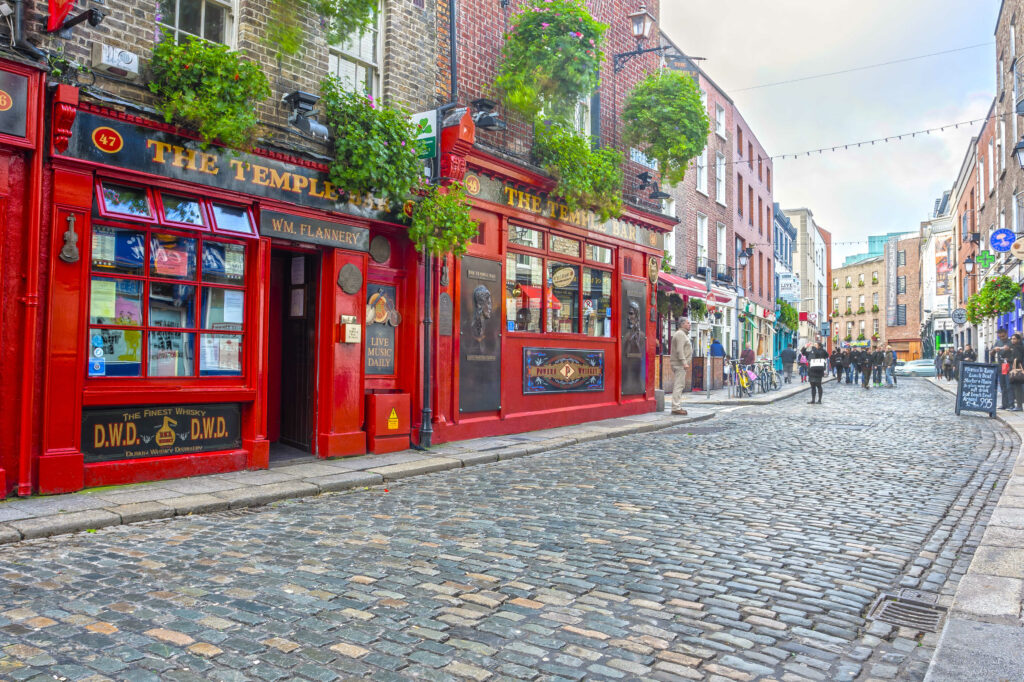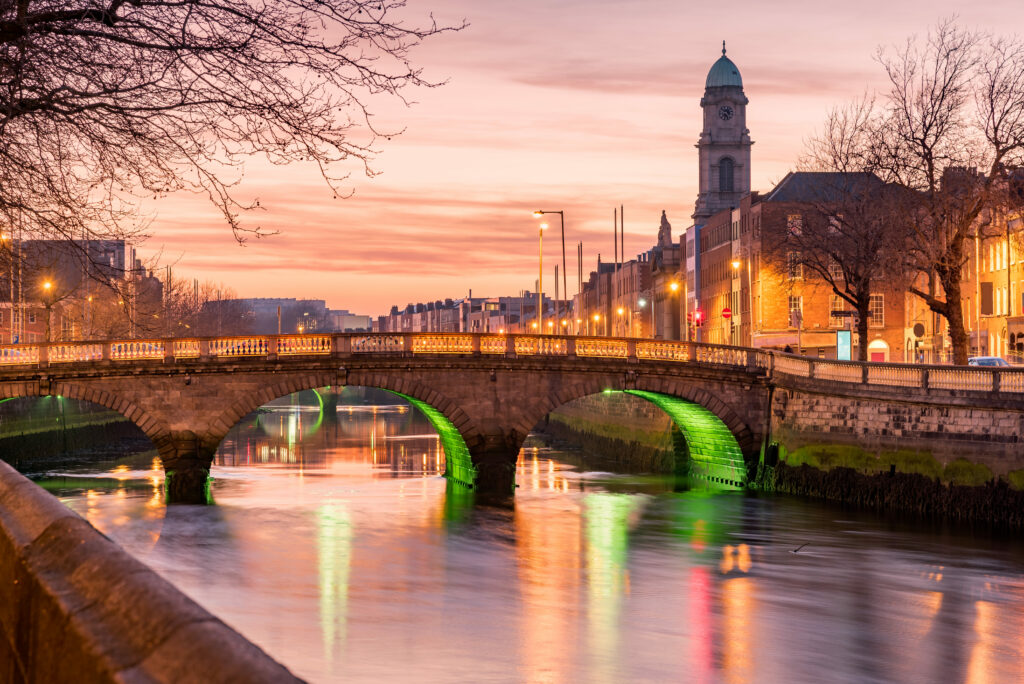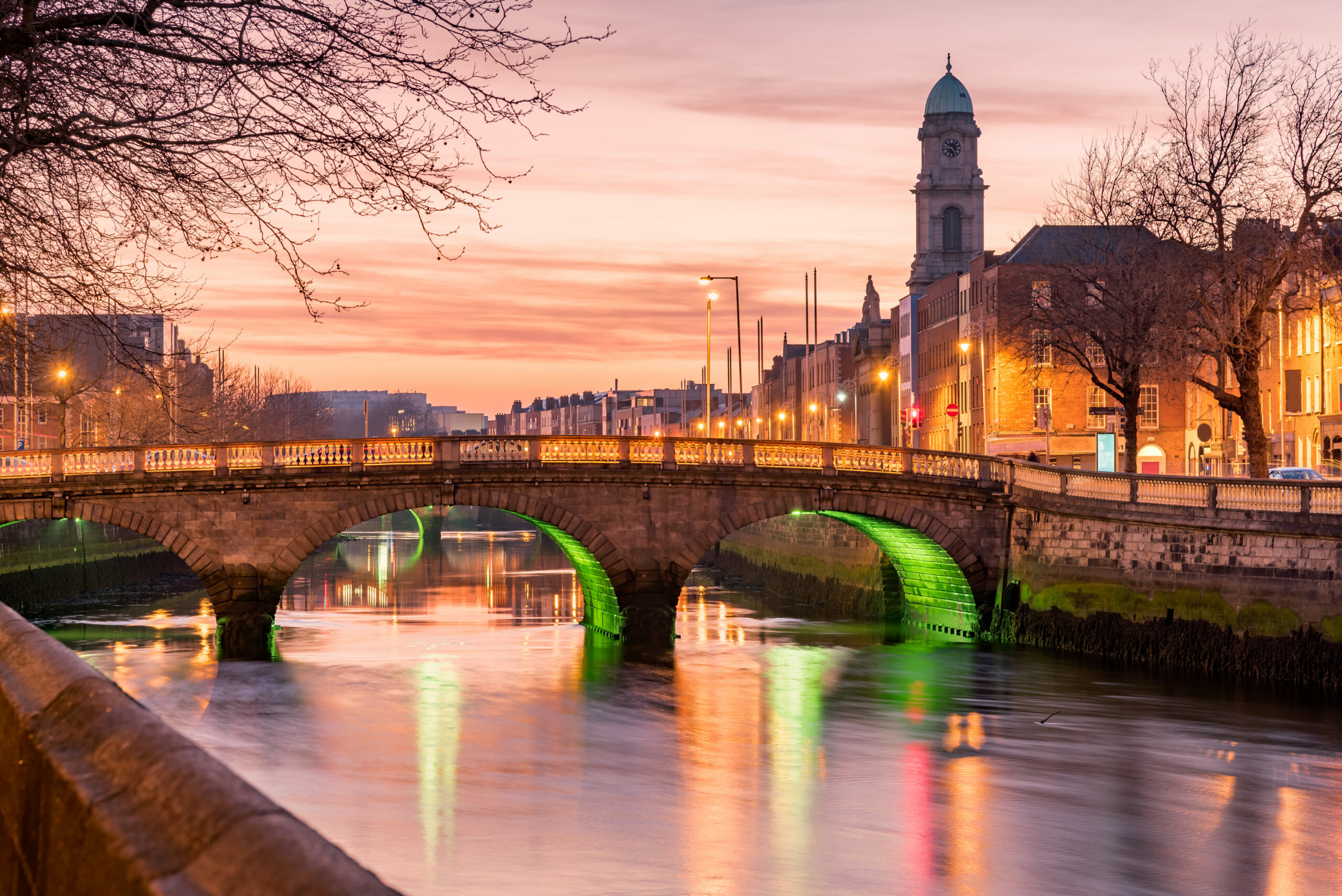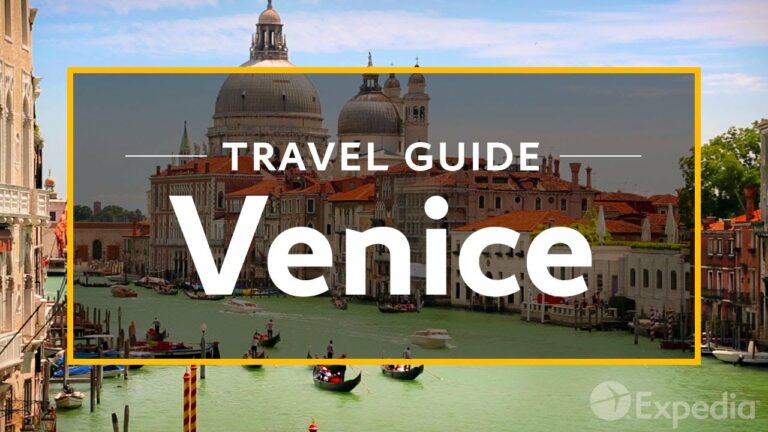Dublin Vacation Travel Guide
Welcome to Dublin
Dublin, the dynamic capital city of Ireland, proudly stands on the East Coast at the mouth of the River Liffey. With more than a third of the population calling it home, Dublin exudes a distinct charm and playfulness that few other cities can match.
Despite a tumultuous history of invasion and resistance, this thriving business capital is infused with poetry, music, and literature that seep through its cobblestone streets. One can easily explore Dublin’s ancient streets on foot or by bicycle, as the city is compact and inviting. The River Liffey gracefully divides the city into two halves, connected by historic bridges that pay tribute to Dublin’s finest moments and heroes.
Dublin’s Social Scene
Oscar Wilde, a beloved Dubliner, once famously said, “Life is too important to be taken seriously.” This sentiment rings true in Dublin, where the past is honored, but each new day is passionately embraced. Nowhere is life celebrated more vibrantly than in the city’s nearly 700 pubs. Dubliners treasure nothing more than having a good time, or as they call it, “the craic.” Pubs and music are at the very heart of Dublin’s traditions and society. Just south of the river lies the Temple Bar area, where locals and tourists have been gathering for generations. Here, one can find art galleries and colorful shops and immerse oneself in spirited and often improvised traditional folk music.

Music and Entertainment
Further south on Grafton Street, a lively shopping precinct known for its buskers, entertainment takes on a different form. This vibrant street proudly serves as a launching pad for many international musical acts.

On the other end of the spectrum, to the east, stands the architecturally spectacular Aviva Stadium. If you time your visit right, you may catch an international superstar performing here. Of course, any local will tell you that music and a pint glass go hand in hand. The history of Guinness, one of Ireland’s most famous institutions, is showcased at the Guinness Storehouse.
Dublin’s Literary and Historical Heritage
The picturesque Grand Canal was built during this time as well, connecting Dublin to the west of Ireland and allowing Guinness to be exported. This marked the beginning of one of Dublin’s great success stories. For whiskey enthusiasts, a visit to the Old Jameson Distillery is a must. Here, one can discover the magic of how three simple ingredients are transformed into a smooth whiskey that is enjoyed all over the world. Amongst all the gifts Dublin has given to the world, perhaps the most captivating are its stories.
Trinity College, originally built for the sons of the Irish gentry, houses some of the oldest remaining manuscripts in the world, including the 1000-year-old Book of Kells. This ancient manuscript is just a small part of Dublin’s rich literary history. The city is renowned for its authors, playwrights, and poets, with tributes to them scattered throughout. Visit the flamboyant statue of Oscar Wilde adorned with precious stones that reflect his love for beauty. Pay your respects to James Joyce, one of Dublin’s literary giants. And just a stroll away in St Stephen’s Green, more tributes to the past await.

Remnants of Irish Independence
This park holds a special place in the hearts of Dubliners and has witnessed many turbulent episodes in Irish history. During the 1916 Easter Rising, a pivotal battle took place here that reignited the passionate fight for Irish independence from English rule. The ghosts of Ireland’s battle for independence still linger at Kilmainham Gaol, where many rebellion leaders faced brutal executions. Dublin Castle, originally built on a Viking site, is at the center of Dublin’s historic heart. Over its long history, it has served as a prison, a fortress, and a treasury.

Exploring Dublin’s Parks and Monuments
A little further from the city center lies Phoenix Park, one of Europe’s largest walled parks. Here, you can visit the Wellington Monument, a tribute to the 1st Duke of Wellington, a Dubliner known as the Iron Duke who defeated Napoleon at the Battle of Waterloo. Of all Dublin’s heroes, none are as revered as St Patrick himself. He is credited with many miracles, including converting Ireland to Christianity. St Patrick’s Cathedral stands as a testament to his legacy and is said to be where he first baptized pagan chieftains, forever altering Irish history. Nearby, Christ Church Cathedral has stood for almost 1000 years and has witnessed the lives of warriors, kings, and saints. There are so many great tours you can enjoy when visiting Dublin.
Conclusion
Dubliner Jonathan Swift once said, “May you live all the days of your life.” This sentiment perfectly encapsulates Dublin’s essence. Its passion for life is contagious, captivating, and sure to leave an indelible mark on anyone fortunate enough to experience it.







